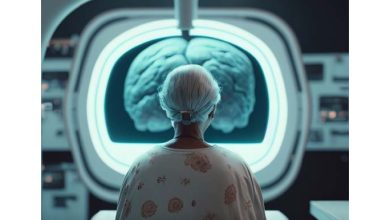Advances in radiodiagnosis and imaging

A substantial percentage of diagnostic imaging examinations are not well justified, and an unnecessary radiation burden is placed on the population, where radiation protection of patients can be more efficient. An insight by Dr Sudhakar Banakar, Consultant Radiologist, BGS Gleneagles Global Hospital
In a world where medicine is becoming more and more advanced and evidence-based, radiodiagnosis has become an important branch of medical science. The branch uses radio waves to arrive at a diagnosis, guide minimally invasive procedures and research that can help patients with their ailments. It is a vital service for both early diagnosis as well as to guide therapeutic procedures. Over the past decade, all these imaging modalities have witnessed many advances, which include;
Ultrasound
• Shear wave Elastography for various organs like thyroid, breast, liver.
• Harmonics and compounding: Helps in filtering out the fundamental echo signals that are transducer generated resulting in crisper images.
• Contrast ultrasound uses a unique type of intravenous contrast agent to improve the better imaging of blood vessels and organs.
• Fusion technology synchronises ultrasound imaging with computed tomography (CT) or magnetic resonance (MR) image, which helps in detecting the hard-to-find lesions easier.
• Handheld, pocket-sized ultrasound equipment has been developed.
Radiography
• Digital single-photon X-ray imaging to reduce radiation dose and to improve resolution.
• Dual-energy mammography
CT and MRI
MRI and CT scans are widely used imaging modalities that use different technologies to create images of the body. MRI is a medical imaging technique that uses computer-generated radio waves and magnetic fields to create detailed and accurate imaging of the organs and tissues in the body. CT uses X-rays that hit an object directly so it can be picked up on film or captured by detectors inside a machine called a tomograph. Both techniques have their benefits depending upon what you are trying to see.
Over the years, much advancement has taken place in this area CT and MR imaging which includes, diffusion and perfusion MRI imaging, MR spectroscopy in conditions like stroke and tumours. With 3D printing, a 3D printed model of a structure can be availed that resembles the ideal visualisation of the anatomical structure. Dual-energy CT gives a much superior lesion detection and tissue characterisation. New detector technology has been introduced that uses microelectronic circuits. Newer advances in MRI are aimed at reducing scan time, reducing noise during the scan.
Development of AI in radiology
Algorithms are being prepared to read X-rays, CT, MRI, etc. However, AI technologies fall within a narrow scope, with the U.S. Food and Drug Administration (FDA)which improves the applications used only for detection,
but not for diagnosis. All medically approved AI tools have their unique functions, such as detecting occlusion or haemorrhage. It is completely up to the radiologist how to utilise these tools in the background of the clinical picture and lab findings.
Deep learning: Greatest advance in AI, however, will be improved image quality. Processing all the collected raw data with the advanced AI tools can improve the contrast and spatial resolution, allowing for immediate scan
results, which provides higher quality images, and potential dose reductions.
Current concerns regarding radiation dose and safety regarding radio- diagnostics
The rapid growth in the use of CT- scanning is a major factor in the increasing collective dose to the global population from medical exposure. According to current reports, a substantial percentage of diagnostic imaging examinations are not well justified, and an unnecessary radiation burden is placed on the population, where radiation protection of patients can be more efficient. Additionally, to an increasing collective dose, the cumulative dose to individuals from medical exposure is becoming more of an issue, which has made the tracking of individual radiation history a valuable tool for radiation protection of patients.
The following measures are being suggested:
Justification of medical exposures-using ALARA (As Low As Reasonably Achievable) principle.
Tracking radiation exposure of patients to determine cumulative effective dose (exceeding 100 mSv and in some cases, 1 Sv are now being reported).
Effective communication between clinicians in radiological practice and health professionals who are knowledgeable about ineffective dose reduction strategies.
Use of newer methods to track patient exposure to systematically raise awareness of patient dose, and to incorporate the inclusion of this data for patient management.
Measures to be taken by patients themselves
• Awareness that Ultrasound and MRI imaging has no radiation.
• Get X-ray examination done only in x-ray facilities licensed with AERB.
• Do not crowd the room where the X-ray is taken. Wait for your turn.
• Cooperate with the radiographer, to avoid repeat X-ray examination.
• If you need to be assisted by your relative during X-ray examination, ask for a lead apron for your relative.
• Covering the body parts other than one to be radiographed with a lead apron.
• In no case, a pregnant woman should assist the patient during exposure.
• Female patients, if pregnant, must inform the radiographer so that necessary precautions can be taken during X-ray examination.
Carry old X-ray/CT records.




